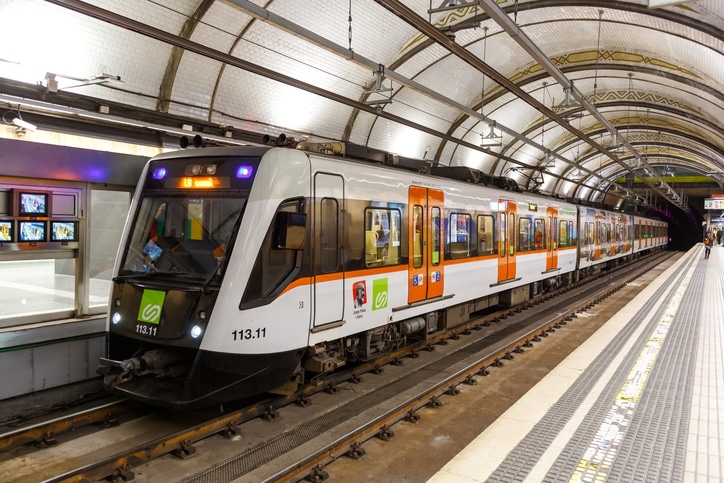This post was originally published on Eco Watch
In Barcelona, energy from train brakes that could otherwise be wasted is now being harvested to charge electric vehicles.
As part of Spain’s MetroCHARGE project, 16 subway stations in Barcelona use brake energy recuperators to redirect energy from the train brakes to EV charging stations on the streets, The Associated Press reported.
Regenerative braking is not a new concept, especially for trains. But the move to transport the energy from the brakes through cables to electric vehicle chargers is an innovative way to supply power to charging stations.
According to the Transports Metropolitans de Barcelona (TMB), the main transportation operator in Barcelona, the MetroCHARGE project uses a combination of the brake energy recuperators on select trains as well as five solar power plants and a combination of ultra-fast and semi-fast EV chargers to harness clean energy and create a self-sufficient EV charging network.
“We’re trying to take advantage of the power that’s already in the metro system and use that spare energy to feed EV chargers on the street,” said Marc Iglesias, head of sustainable mobility at Àrea Metropolitana de Barcelona, a collaborator on the MetroCHARGE project, as reported by Grist.

In addition to the brake energy going to EV chargers, it also helps power nearby lights and passenger escalators, Grist reported. In total, the MetroCHARGE program meets all energy needs for 28 of 163 subway stations in Barcelona, The Associated Press reported. The project cost 7.3 million euros ($7.6 million), an amount that the program is estimated to recover in energy savings in about four years. The regenerative braking system is further expected to save around 3,885 metric tons of carbon dioxide per year.
The regenerative braking project not only provides cleaner energy to EV chargers, but it could also lower charging rates for users.
“Since the recharging stations are installed nearby, the energy, instead of being put back into the general electric network, goes directly to the charging stations, and that allows the provider to potentially offer lower prices,” Alvaro Luna, a professor of electrical engineering at the Polytechnical University of Catalonia, told The Associated Press. “We can say that the innovation is one of urban planning, of being able to bring together energy uses within a city.”
About 2.3 million riders use the Barcelona metro system each weekday, The Associated Press reported, and locals and tourists take around 440 million trips on the metro system per year, according to Grist.
While the MetroCHARGE project is a step in the right direction for greener transportation and energy, there is more work to be done. As The Associated Press reported, Spain missed its goal of installing 100,000 EV charging stations by 2021, as it has only around 37,000 now. The country will need to ramp up installations to meet a growing demand for EVs. According to Statista, demand for EVs in Spain is expected to reach an annual growth rate of 14.94% through 2029.
The post Spain’s MetroCHARGE Powers EVs With Energy Recovered From Barcelona Subway Train Brakes appeared first on EcoWatch.





0 Comments